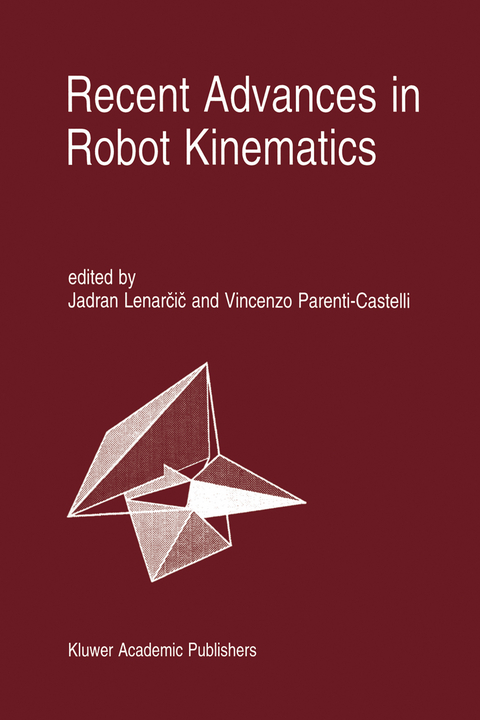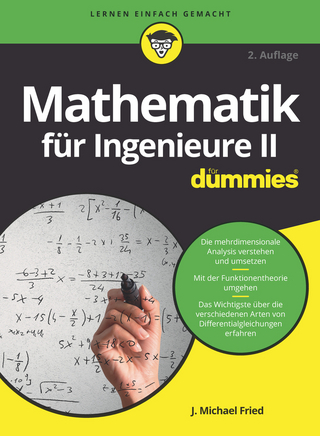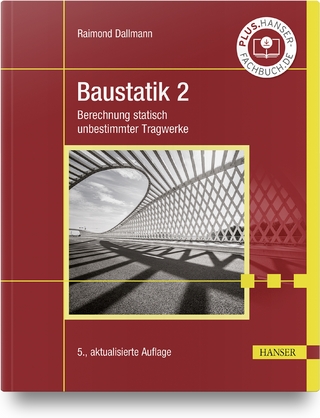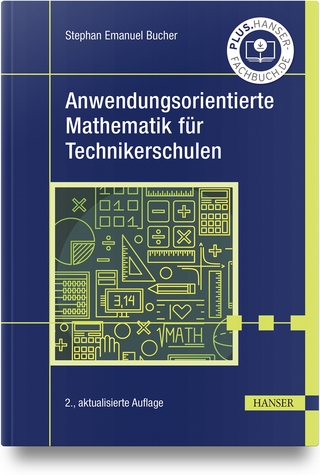
Recent Advances in Robot Kinematics
Springer (Verlag)
978-94-010-7269-4 (ISBN)
1. Plenary.- The direct kinematics of the general 6–5 Stewart-Gough Mechanism.- The kinematic sensitivities of redundant robotic manipulators.- 2. Control and optimisation.- Modular decomposition for optimal dynamic design of redundant macro/mini manipulators.- Singularity-robust second-order kinematic control of robot manipulators.- Dynamics and control of elastic joint robots on a group configurational manifold.- Simulation of grasping with a flexible-joint robot.- On-line collision-recognition and collision-avoidance control for redundant articulated robots.- Gradient-based kinematic control of nonredundant serial robots in special configurations.- 3. Performance.- Kinematics of a three degree-of-freedom motion platform for a low-cost driving simulator.- Kinematic manipulability of closed chains.- Singularity analysis and categorisation of generic 3-R regional manipulators.- Coordinate-free formulation of the Cartesian stiffness matrix.- Stability analysis of compliant mechanisms.- Acceleration analysis, via screw theory, and characterization of singularities of closed chains.- 4. Workspace and trajectory analysis.- Computer aided design of robot trajectories using rational motions.- Optimum design of closed kinematic chains in the presence of obstacles.- Synthesis of discretely actuated manipulator workspaces via harmonic analysis.- Optimal location of path following tasks in the workspace of a manipulator using genetic algorithms.- Feasible workspace regions for a two-revolute manipulator design.- Determination of the workspace of 4R manipulator: basic case and particular cases.- 5. Modelling and computation.- A discussion on metric relations in spatial kinematics: Implicit and explicit formulas and functional dependence.- Tongue model for characterizing vocaltract kinematics.- A new and efficient method for symbolical calculation of the Jacobian matrix.- Quaternion based force-torque analysis of open serial kinematic structures.- Dual vectors of the kinematic and the dynamic kind in matrices.- Dual numbers, Lie algebra and 6R inverse kinematics.- Backbone curves to approximate minimum joint torque configurations of planar multiple-link manipulators in presence of obstacles.- 6. Analysis and simulation.- Simulating the motion of a nonholonomic robot and its trailer.- Screwball: a user interface for specifying screws.- Simulation of flexible manipulators based on their Newton-Euler model.- Modeling of a braced robot with four-bar mechanism.- A remarkable class of overconstrained linkages.- How to extend Robert’s law for eccentrically driven, inverted slider-cranks.- 7. Performance of parallel mechanisms.- On self-motions of a class of parallel manipulators.- On the design of parallel manipulators for a prescribed workspace: a planar quaternion approach.- Kinematotropic linkages.- The interest of redundancy for the design of a spherical parallel manipulator.- Forward kinematics and mobility criteria of one type of symmetric Stewart-Gough platforms.- Singularity analysis and representation of spatial six degree of freedom parallel manipulators.- 8. Analysis of parallel mechanisms.- Kinematics of a three-dof platform with three extensible limbs.- A class of fully parallel manipulators with closed-form forward position kinematics.- Kinematic mapping of 3-legged planar platforms with holonomic higher pairs.- A forward analysis of a two degree of freedom parallel manipulator.- Closed plane mechanisms as a basis of parallel manipulators.- A 3-D sensor for parallel robot calibration. A parameter perturbation analysis.- AuthorIndex.
| Erscheint lt. Verlag | 20.4.2014 |
|---|---|
| Zusatzinfo | VI, 462 p. |
| Verlagsort | Dordrecht |
| Sprache | englisch |
| Maße | 155 x 235 mm |
| Themenwelt | Mathematik / Informatik ► Mathematik ► Angewandte Mathematik |
| Technik ► Elektrotechnik / Energietechnik | |
| Technik ► Maschinenbau | |
| ISBN-10 | 94-010-7269-8 / 9401072698 |
| ISBN-13 | 978-94-010-7269-4 / 9789401072694 |
| Zustand | Neuware |
| Haben Sie eine Frage zum Produkt? |
aus dem Bereich


